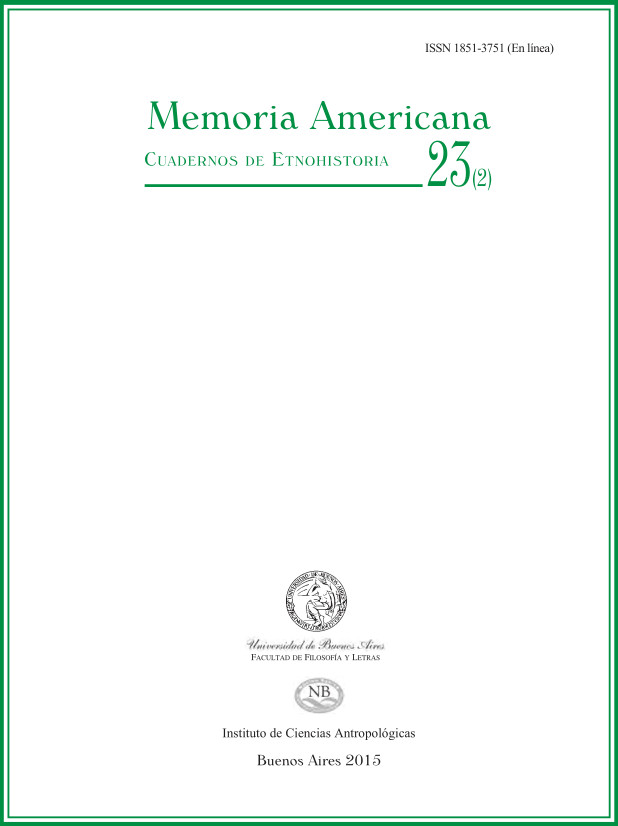Reflections on the dossier "Thinking about American colonial borders from the perspective of their officials"
Abstract
The colonization of the far South of America entailed numerous policies of interaction between the newcomers and local native groups. Although the Spanish crown had a bureaucratic apparatus and specific institutions -army, encomiendas, Indian villages, peace treaties, among others- to achieve Indigenous subjugation and the effective occupation of the territory, the implementation of these mechanisms of domination varied notably across the border areas. The crown's difficulties in exercising homogeneous and rigorous control over the vast territory it sought to control -even after the attempt prompted by the Bourbon reforms- allowed the officials in power to define their own interests and implement, more or less creatively, original modes of interaction with ethnic groups and their leaders. This particularity contributed to the borders of each jurisdiction manifesting specific historical characteristics; on this occasion, the focus will be on some of these colonial officials.Downloads
References
Bonfil Batalla, Guillermo 1992. El concepto de indio en América: una categoría de la situación colonial. En G. Bonfil Batalla; Identidad y Pluralismo cultural en América Latina: 25-45. Puerto Rico, CEHASS.
Combès, Isabelle 2010. ¿Indios y Blancos? Hacer (Etno) historia en las Tierras Bajas de Bolivia. Boletín Americanista LX 1 (60): 15-32.
Lorandi, Ana María 2008. Poder central, poder local. Funcionarios borbónicos en el Tucumán colonial. Un estudio de antropología política . Buenos Aires, Prometeo Libros.
Nacuzzi, Lidia R. y Carina P. Lucaioli 2014. Perspectivas antropológicas para el análisis histórico de las fronteras. En Trinchero, H. Campos Muñoz, L y S. Valverde (comps.); Pueblos indígenas, estados nacionales y fronteras. Tensiones y paradojas de los procesos de transición contemporáneos en América Latina I: 27-72. Buenos Aires, Facultad de Filosofía y Letras, Universidad de Buenos Aires.
Nacuzzi, Lidia R. y Carina P. Lucaioli 2015. Declaraciones de cautivos: piezas de archivo multivocales de la frontera colonial (Virreinato del Río de la Plata, siglo XVIII). Diálogo Andino Revista de Historia, Geografía y Cultura Andina 46: 27-37.
Roulet, Florencia 2004. Con la pluma y la palabra. El lado oscuro de las negociaciones de paz entre españoles e indígenas. Revista de Indias LXIV (231):313-347.
Weber, David 2007. Bárbaros. Los españoles y sus salvajes en la era de la Ilustración. Barcelona, Crítica.
Los derechos de autor son cedidos a Memoria Americana. Cuadernos de Etnohistoria, no obstante los autores podrán recuperarlos y reproducir su trabajo en otros medios o formatos previo envío de solicitud al Comité Editorial. En tales casos, deberá citarse a Memoria Americana. Cuadernos de Etnohistoria como primera publicación del trabajo y el mismo queda bajo una licencia Creative Commons CC BY NC SA 3.0 Attribution- Non Commercial -ShareAlike 3.0, la cual provee libre acceso inmediato a sus contenidos pues se rige por el principio según el cual hacer disponible -en forma gratuita- la investigación al público fomenta un mayor intercambio de conocimiento a nivel global.
Los autores deberán remitir el siguiente formulario de cesión de derechos y compromiso de originalidad:
Cesión de derechos y compromiso de originalidad
Al Comité Editorial de Memoria Americana, Cuadernos de Etnohistoria
Por la presente declaro ser el autor del trabajo titulado (nombre del artículo), el mismo es original y propio y no ha sido publicado en ningún formato o soporte con anterioridad.
En caso de ser aceptado para su publicación en Memoria Americana. Cuadernos de Etnohistoria (número/año) cedo los derechos editoriales que me corresponden por el aludido artículo para su publicación en todos los formatos que posea la mencionada revista.
Si quisiera publicar este artículo a través de otro editor o en otro lugar me comprometo a solicitar el correspondiente permiso por escrito al Comité Editorial de Memoria Americana. Cuadernos de Etnohistoria. De ser afirmativa la respuesta del Comité Editorial me comprometo a lo siguiente:
- especificar lugar, editorial y fecha de la primera publicación del artículo en la nueva publicación
- realizar esta republicación sólo luego de transcurridos un año calendario desde la fecha de la presente nota de cesión de derechos
FIRMA
Aclaración











